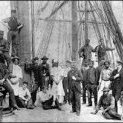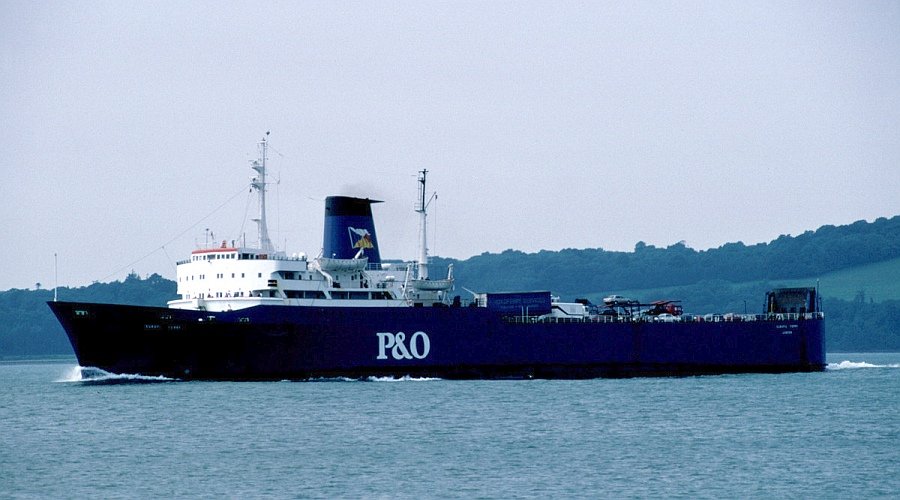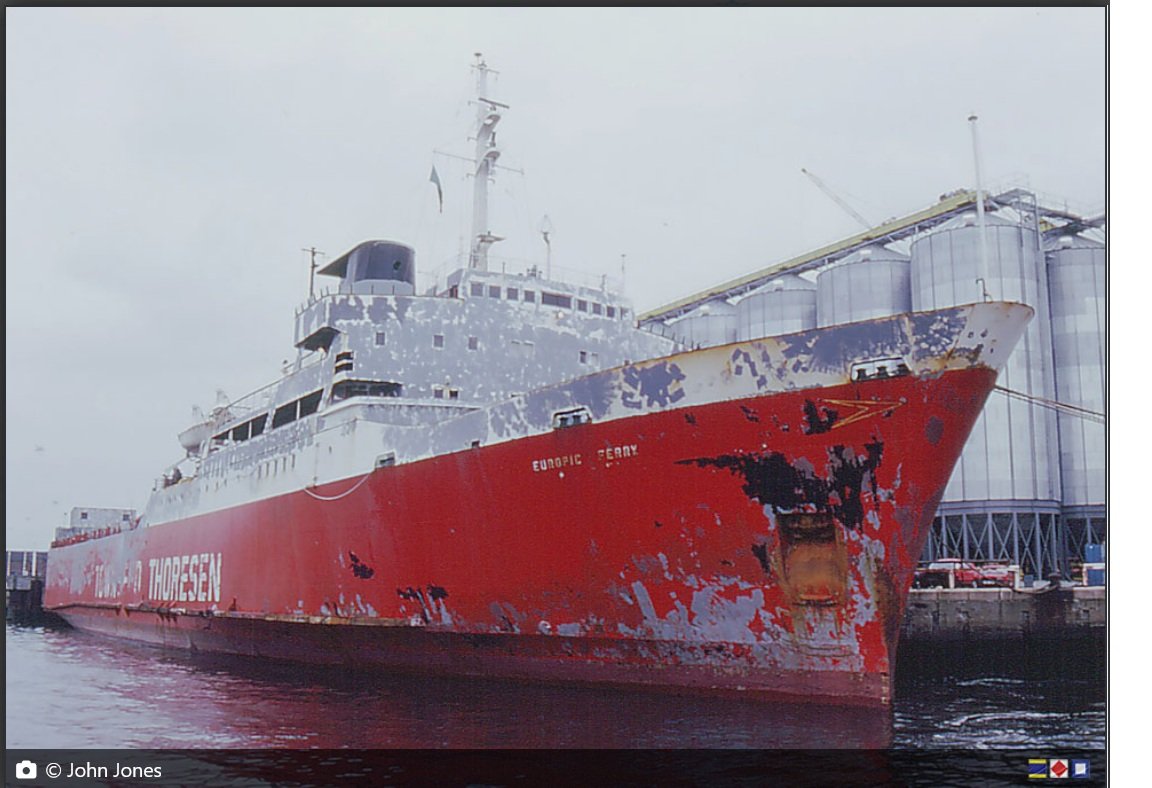-
Posts
2,119 -
Joined
-
Last visited
Content Type
Profiles
Forums
Gallery
Events
Everything posted by Ian_Grant
-
All might not be lost if electronics get wet. A few years ago I restored and relaunched (with modern 2.5G electronics) my old Class M RC sailboat from the 80's. At the cottage she was reaching directly away from me in a good wind, when I realized I could see the white of her deck....how could that be, I wondered? Before my appalled eyes she sank by the stern, dragged down by the lead keel. Turned out that a piece of balsa wood teenage me glued in as the rudder tube support block came free and water flooded through the rudder hole. I had to snorkel out and find her about 12 ft deep on the bottom. After having their cases disassembled and being packed in rice for a while, the Receiver and servos were fine as was the large 80's sail winch. Only the battery itself was fried.
- 55 replies
-
- Nordkap
- Billing Boats
-
(and 1 more)
Tagged with:
-
Very late to this party........beautiful model, should look great on the water! My only comment is that it is useful to have a "coaming" around the inner edges of the walls of a removable cabin i.e.close-fitting strips of wood extending up a ways from deck level to keep any water that reaches the cabin walls from dripping down into the electric innards. Did you try the motor/speed controller in your last water test? Good work! Welcome to RC.
- 55 replies
-
- Nordkap
- Billing Boats
-
(and 1 more)
Tagged with:
-
Recall that @yancovitch built a superb SR using bits of Heller's plastic hull to "plank" a wood bulkhead hull, which looked the cat's pajamas in terms of proportions. He is a master builder. I agree with Marc about a build out at this stage being impractical but his demonstrated how SR could look.
- 396 replies
-
- soleil royal
- Heller
-
(and 1 more)
Tagged with:
-
Eric, magnificent job so far and I admire your re-dos to get it right. We've had this debate before on MSW, but your photos bring into focus once again Heller's inadequate volume for the u/w hull vs topsides. Are you planning to place the lower main wale almost completely under water amidships to make her look better? Or have her set in a waterline display?
- 396 replies
-
- soleil royal
- Heller
-
(and 1 more)
Tagged with:
-
Hello; While finishing final details on my HMS Lion for RC, I was looking around for something different to build and also looking to try a 3D print of an entire ship. I decided to call it a "kit" as I am merely assembling components, albeit components 3d-printed by moi. The website "CGTRADER" has several very nice candidate 3D builds, but I settled on this ferry named "MV Europic Ferry" which was built in 1967 and plied the North Sea initially between Harwich and Rotterdam in the 70's. Her capacity was 60 passengers in cabins, 50 cars and 60 commercial trailers, or 295 metres of cargo.She had all superstructure forward, and two vehicle decks aft; one on the upper deck and one on the deck below. It seems there was a hydraulic ramp between the two vehicle decks. Interestingly, apparently, she only had a stern vehicle door so somehow they had to turn around while aboard......not sure how that worked! As an aside, she was actually expropriated by the UK government in 1982 for the Falklands war, sailing with the fleet carrying stores, troops, and equipment such as helicopters to the south Atlantic. She returned with grey paint blotted all over her as a home-made camouflage scheme. In 1993 she was sold to a Cypriot company who operated her for ten years with a large superstructure added from midships to stern. She was beached in India for scrapping and broken up in 2005. Here are a few pics: In her early days - Returned from the Falklands with home-dabbed grey camouflage - in later years after being sold- I like the red hull version, and so did the 3D artist who made the files, so that's what I will be building. I've had my Bambu A1 printer for a year now, but up to now I've only printed various small bits for Lion. So far I have printed four hull sections of the eight required, the first three at the bow and the last piece at the stern.; it's a new experience for me as two of them took more than 20 hours each to complete. Here are the three bow sections just dry assembled. In this second pic the stern section can also be seen, with the opening for the vehicle door. The printed surface is pretty good, no large "waviness" but I will be using Bondo spot/glazing putty to fill in the minor ridge line artifacts. According to the slicer, the finished hull should consume 7 pounds of plastic; that's without the superstructure. She'll have twin motors and twin rudders. Finished length is 1470mm, beam 200mm, height 400mm (don't tell my wife!).🤫 I plan to illuminate her, and have not yet thought about storage implications. 🤔
-

HMS Victory by ECK - OcCre - 1/87
Ian_Grant replied to ECK's topic in - Kit build logs for subjects built from 1751 - 1800
Looks like she nearly brushes the ceiling! What's the measurement from keel to mainmast head? -
Well, I made mine mine a decade ago and did indeed use yellow ochre for the hull stripes. Shortly thereafter, the HMS Victory restoration team announced that they had taken a core drill sample and separated out all the paint layers and found the "true" colours from Nelson's time. As they were in the middle of a 20-years restoration they painted the entire ship in these colours. The result was a bit surprising as the stripes had a distinctly pinkish tinge. At any rate, I believe they have since once again stripped off much of her outer planking after discovering more water penetration due to laminated planks used in previous restorations. I would advise against using Heller's Humbrol "scorched earth" for things like the hatch coamings and ship's wheel......I did this and it is too reddish; a nice brown would be better. Here is a pic of my model during the build, with the reddish hatches on the forecastle and the yellow ochre which it was too late to change. Here is a video about the repainting of the real ship. https://www.youtube.com/watch?v=KmNXRWtQ-P0
-
She is a challenging kit but the result is stunning. There are many builds here for inspiration and tips. Good luck and I look forward to following your progress!.
-
I too like that X-Y table. Hmmm, one would look good on my drill press.......must start grooming the Admiral to the idea.......😏
- 186 replies
-
- Flying Cloud
- Mamoli
-
(and 1 more)
Tagged with:
-
This is exactly the type of ship for which I've been searching for 3d files suitable to print a model for RC. They're very impressive looking. Couldn't find any, nor could I find plans/drawings for a normal scratch build; the owners seem to keep design info on their ships private. I gave up. I particularly liked the "Edda Flora" for which Bauer sells a nice RC kit, but it is 1000 euro, albeit I think including two functional Voight-Schneider drives. She came to my attention because I was finding 3D files for ancillary equipment for her. Anyway I considered buying 3D files for a WWII Castle class corvette, but have settled on a 70's North Sea ferry which ran from Harwich to Rotterdam among other routes.; "MV Europic Ferry". Should be an unusual model at club sails.
-

HMS Victory by ECK - OcCre - 1/87
Ian_Grant replied to ECK's topic in - Kit build logs for subjects built from 1751 - 1800
I'm surprised Occre only calls for 4mm blocks. Actual blocks on Victory ranged from 24" quarter blocks for topsail sheets, to 6" blocks for buntlines etc. Just sayin'. 🤔 -
John, great work on this small-scale model! What did you use for ratlines?......I too have a model which would need ratlines at 1/10" intervals but have not found something suitable.
- 165 replies
-
- Red Jacket
- Marine Model Company
-
(and 2 more)
Tagged with:
-
Looking really good! Your work is very neat. I have to put rolled up torpedo nets along the deck of my WWI RC battlecruiser and I thought of Tulle but didn't think it practical to try to roll up 4ft lengths, so I bought braided line which will represent the nets, when dyed black. Hey, it's only RC........😉
-
Sorry to confuse; yes this is a build log for an escort carrier but I was commenting on the castle class corvette (K488) behind the carrier in the photos. My two buddies in the RC boat club have flower class corvettes at 1/48 which are manageable at about 48", but printing the bigger castle class at the same scale would be 63".
- 51 replies
-
- Puncher
- escort carrier
-
(and 1 more)
Tagged with:
-
Hi Brad; just found this build log after googling for 3d printable ship files. Is that boat in the background the Castle Class corvette from Bensworx? Did you print it at 1/48 scale? If so, what is her ballasted weight to set her at proper waterline? Is she awkward to lug around at her length? I just bought the Castle files today (on sale 50% off!) from cgtrader. Not sure I can print the hull bits at 1/48 in my Bambu A1's build volume, without learning how to "cut" in Bambu Studio. Maybe 1/64 would be easier but two guys in my RC boat club have 1/48 Flowers so it would be cool to hang with them........
- 51 replies
-
- Puncher
- escort carrier
-
(and 1 more)
Tagged with:
-
Unbelievable.......your thread must be thin as spider webbing......fantastic model in any scale but beyond outstanding at this scale. I have one in a box; I know how tiny it is.
- 321 replies
-
- Sovereign of the Seas
- Airfix
-
(and 1 more)
Tagged with:
-
A LEGO Technique ropewalk! Very cool. In a similar vein, here is my meccano serving machine using parts I had as a kid: And let's not forget the LEGO Techniques drivable full-size Bugatti, powered by 2304 LEGO Power Functions motors ganged together. The LEGO car is the one on the right. 😏 Apparently they have also built a similar Mclaren P1 now.
-
Cameras are so unforgiving, but not a glue mark or paint error in sight. Immaculately built...
-
I saw those chronometers years ago, I think at the Royal Observatory Greenwich. I picked up a little book about him and them; loved the description of his "temperature testing" ie one room's window open in winter, to verify one cold unit against a second warm one. The genius of our ancestors always impressed me, particularly clockmakers and astronomers.
About us
Modelshipworld - Advancing Ship Modeling through Research
SSL Secured
Your security is important for us so this Website is SSL-Secured
NRG Mailing Address
Nautical Research Guild
237 South Lincoln Street
Westmont IL, 60559-1917
Model Ship World ® and the MSW logo are Registered Trademarks, and belong to the Nautical Research Guild (United States Patent and Trademark Office: No. 6,929,264 & No. 6,929,274, registered Dec. 20, 2022)
Helpful Links
About the NRG
If you enjoy building ship models that are historically accurate as well as beautiful, then The Nautical Research Guild (NRG) is just right for you.
The Guild is a non-profit educational organization whose mission is to “Advance Ship Modeling Through Research”. We provide support to our members in their efforts to raise the quality of their model ships.
The Nautical Research Guild has published our world-renowned quarterly magazine, The Nautical Research Journal, since 1955. The pages of the Journal are full of articles by accomplished ship modelers who show you how they create those exquisite details on their models, and by maritime historians who show you the correct details to build. The Journal is available in both print and digital editions. Go to the NRG web site (www.thenrg.org) to download a complimentary digital copy of the Journal. The NRG also publishes plan sets, books and compilations of back issues of the Journal and the former Ships in Scale and Model Ship Builder magazines.








